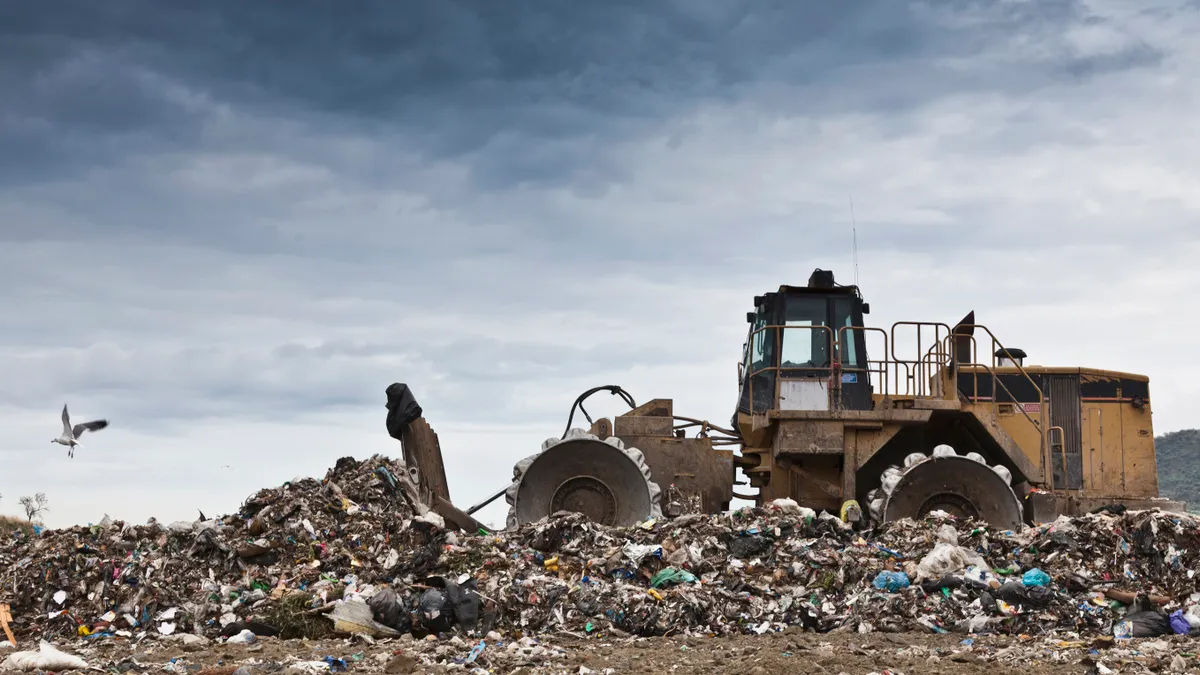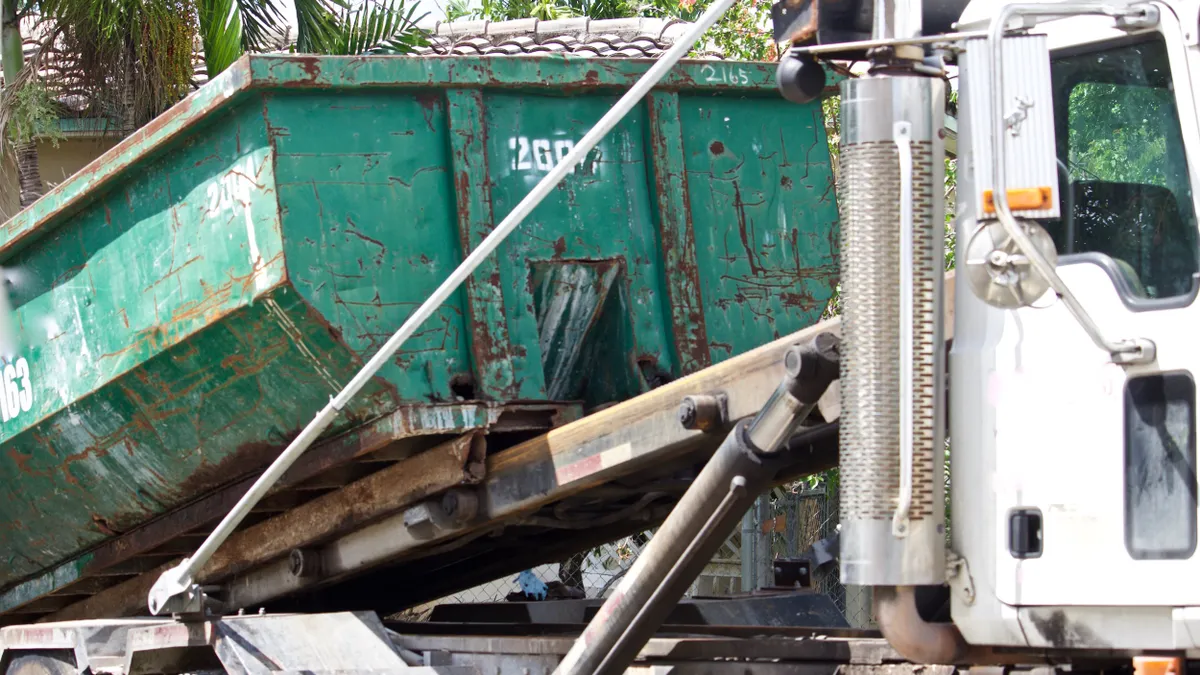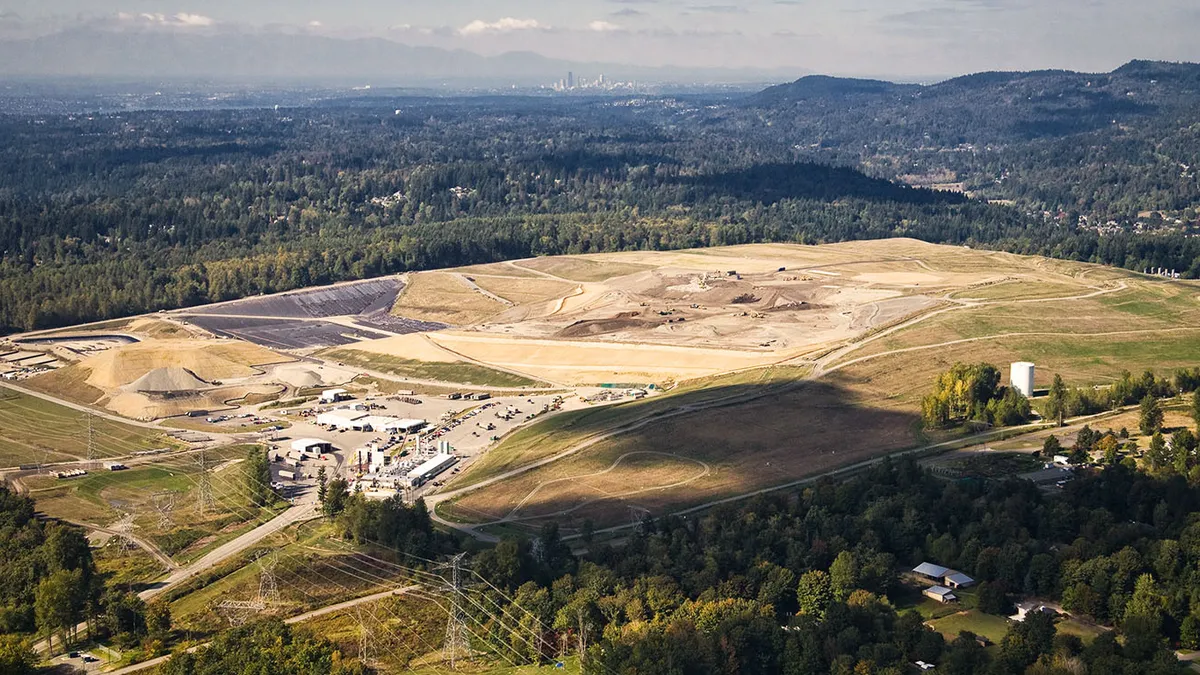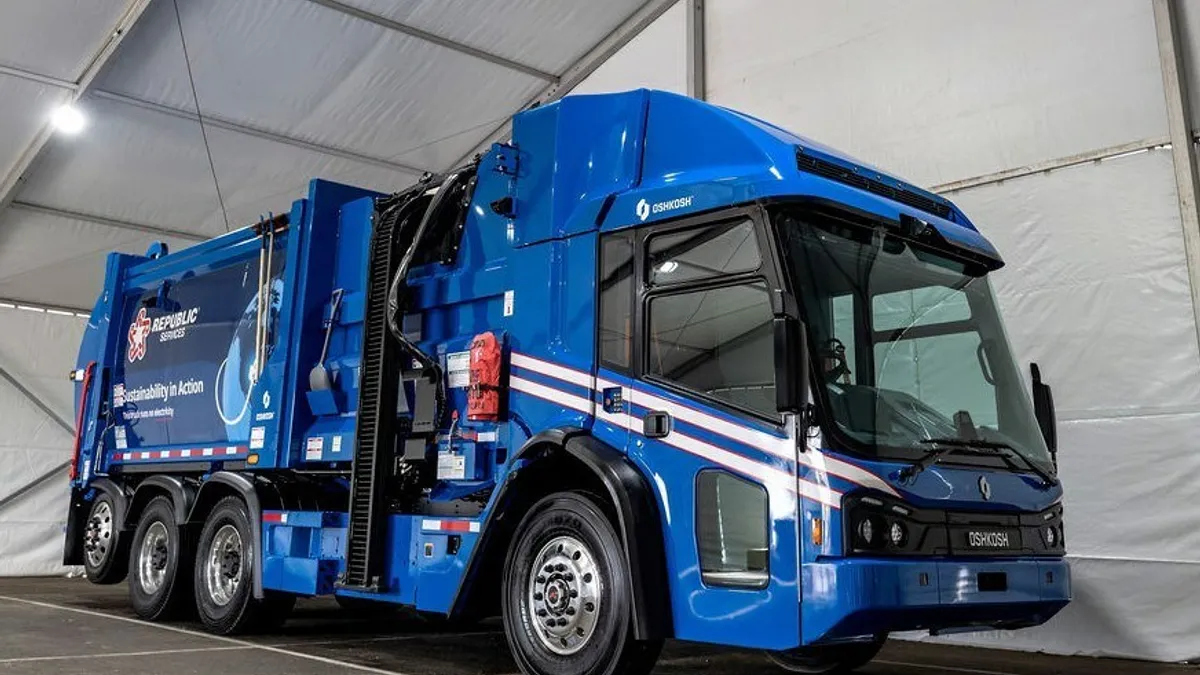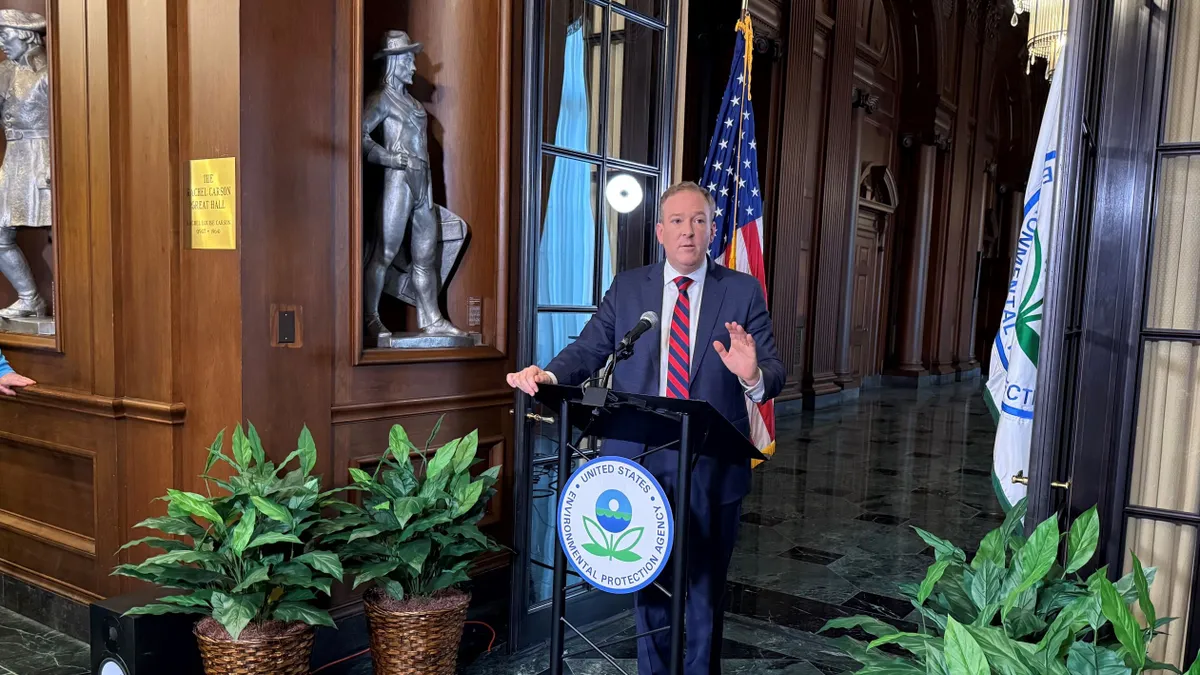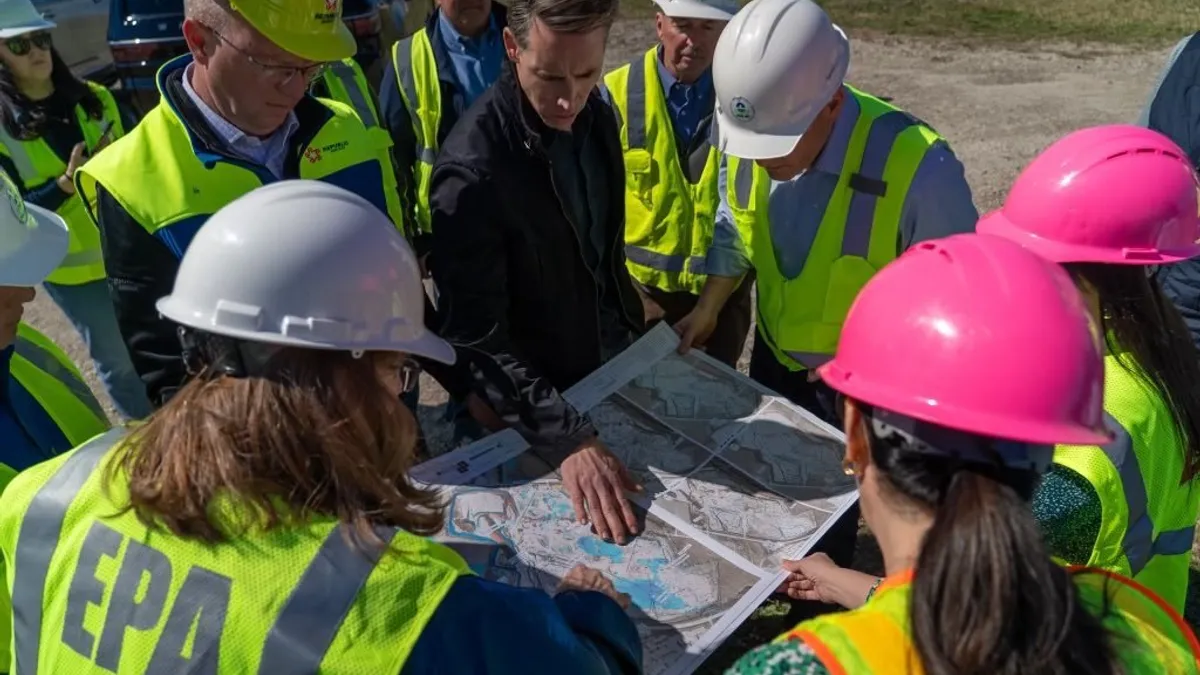Growing scrutiny of landfill emissions is becoming a flashpoint for the waste industry, as shareholders and regulators alike increasingly prioritize sustainability and climate action.
That heightened attention is creating concern in the sector, as operators of all sizes worry about the possibility of regulations — potentially in the form of a cap-and-trade program — along with financial repercussions. Many also argue the U.S. EPA's current approach to measuring greenhouse gas emissions doesn't properly capture the levels coming from landfills, which are notoriously difficult to gauge.
Speaking at last week's Global Waste Management Symposium (GWMS), executives from Waste Management and Republic Services joined researchers and consultants in laying out the increasingly challenging landscape for operators.
"The pressure is on us right now to better understand and reduce our emissions at our landfills," said Amy Banister, Waste Management's senior director of air programs. "We're having pressure from our shareholders, from our communities, from our state and local governments."
Niki Wuestenberg, air compliance manager at Republic, expressed similar sentiments. "At the end of the day, we're going back to our stockholders and our communities," she said, indicating their demands will sway the industry's priorities.
California already has a cap-and-trade system in place and other states are eyeing similar scenarios, potentially with a landfill component. A number of bills in the U.S. House of Representatives and Senate would trigger national carbon pricing and GWMS speakers emphasized potential implications for the industry. In one hypothetical "financial risk scenario," they estimated a potential $138.25 million in fees across the industry for the first year alone.
Meanwhile, Canada's federal government adopted legislation to price carbon in 2018, although provinces and territories were given the flexibility to maintain or develop a system that works best for their jurisdiction so long as it met the federal standard. Québec's cap-and-trade program, which is linked to California’s program, met the standard.
"We're talking potentially billions of [dollars] if we're stuck with the methodology we have today... [that could] put a lot of us out of business," said Banister, seemingly referring to all landfill operators.
Both Waste Management and Republic have their own respective greenhouse gas reduction efforts, which include details on managing landfill emissions. The former has given itself until 2038 to achieve the "moonshot" goal of offsetting its operational emissions by a factor of four. The latter is aiming to reduce its Scope 1 and Scope 2 emissions 35% by 2030, among other objectives. Both companies have also referenced climate change in their 10-Ks, speculating on the potentially significant financial implications of comprehensive federal legislation.
Anxiety over climate change is playing a key role in pushing the industry to take a more aggressive approach to emissions. Part of the increasing scrutiny stems directly from a report released last November on the results of a joint study between NASA's Jet Propulsion Lab (JPL) and the California Air Resources Board. That study attempted to locate top methane point sources across California between 2016 and 2018, including more than 272,000 infrastructure elements.
According to the final report, "the largest methane emitters in California are a subset of landfills," with Republic, Waste Management and Waste Connections singled out as "super emitters" — those that individually represented more than 2% of site emissions.
Daniel Cusworth, a postdoctoral fellow with JPL who worked on the study, presented his findings to GWMS audience members, noting the results likely "have policy implications." He also highlighted several of the sites in particular, including Republic's Sunshine Canyon Landfill in the Los Angeles area. The researchers detected unusually large methane plumes coming from the site early on in their research and engaged with Republic about the issue.
"Credit to Sunshine Canyon and to Republic, they really invested heavily in trying to remediate this," Cusworth said.
As a result of the early dialogue and subsequent remediation, the site's emissions decreased significantly, a decline the researchers were able to document. Cusworth told Waste Dive landfill companies and operators have offered "really good engagement" overall on the emissions findings and been "very receptive" to discussing the issue.
"We will be engaging with [other] companies in the future," he said, noting ongoing work to similarly map emissions in Texas, Louisiana and other areas. While Cusworth said there has been "some pushback" from the waste industry, that criticism has largely focused on critiques of the satellite's "snapshot in time" approach to measuring emissions.
A former Republic employee who oversaw landfill gas work for the company told Waste Dive he had critiques of the findings for that reason. He caveated, however, that landfills benefit from emissions monitoring and catching leaks is important for the overall functioning of any site.
Studies like the California report are likely to become more common. The state is looking at conducting monitoring more routinely and others may follow suit. That attention could eventually spill over into federal territory, at a time when the industry has qualms with the EPA's greenhouse gas reporting methodology.
"We're the only industry that actually has to report our emissions, with several different equations," said Wuestenberg. She explained the industry has "really struggled with trying to find a good consistent approach" to reporting greenhouse gases.
Landfills currently contribute 16% of U.S. methane emissions, according to national measurements, and are the third-biggest nationwide source of that greenhouse gas. The widely-used EPA LandGEM model, based on a first order decay equation, is a long-running source of complaint for waste companies and experts. Raymond Huff, a greenhouse gas specialist with SCS Engineers, cautioned the system can be "easy to manipulate." An alternative recovery-based emissions model is also available, but only to sites with gas collection and control systems.
Last fall, Huff told Waste Dive the agency's approach to landfill gas measurement has historically come with a "huge range of potential error," which can penalize landfills. While there have been improvements to how the agency accounts for emissions, he said, the overall approach still limits the ways in which sites can show improvement and fails to fully capture their contributions to global warming.
Qualms with emissions reporting will likely heighten as the industry eyes growing momentum around carbon pricing. With companies arguing that billions of dollars could be on the line, many are cautiously eyeing advancing state regulations, along with the potential for power shifts following the 2020 election.
Rather than coming out against carbon pricing point blank, however, industry members instead advocated for a "robust methane emissions measurement standard" that could see a reduction in penalties. They also advised waste companies and landfill operators to address potential issues swiftly.
"We need to get smart on our measurement," said Wuestenberg, recommending that "where we can reduce our emissions, we reduce them."


